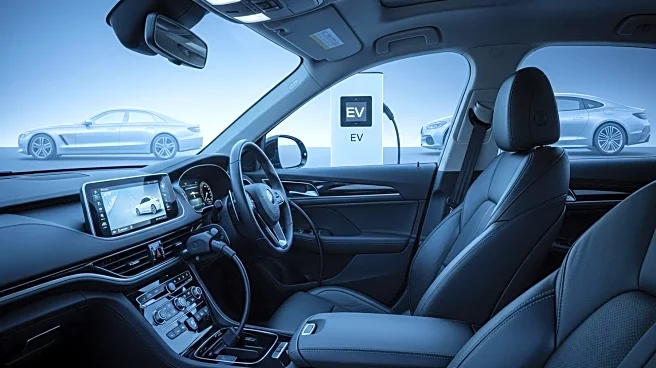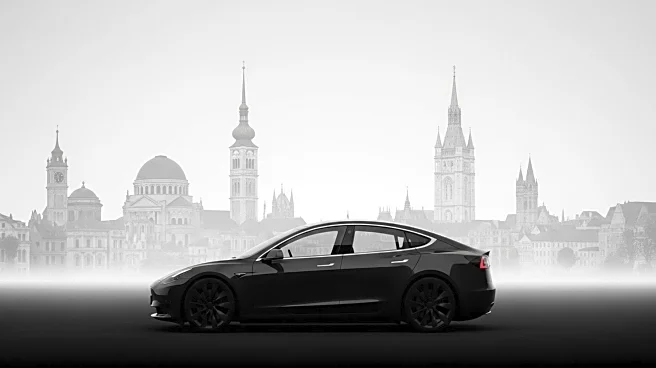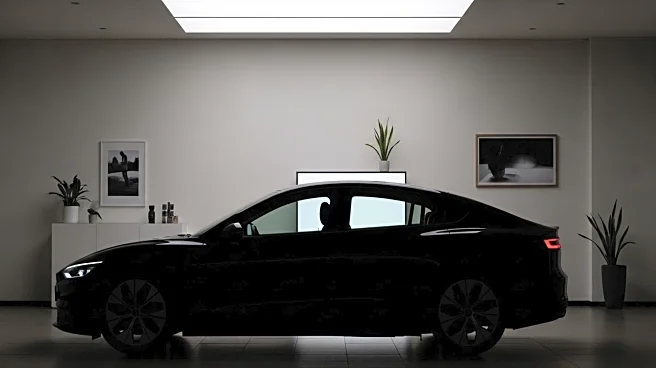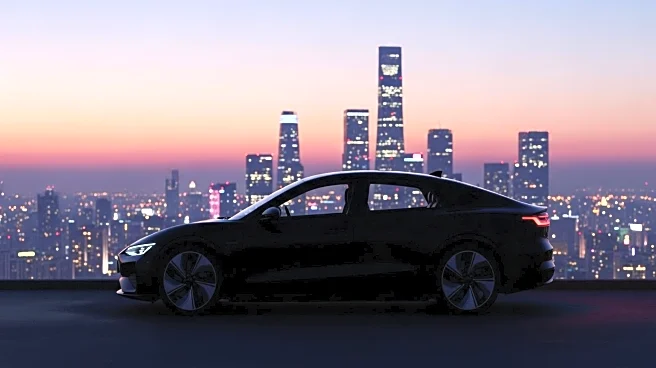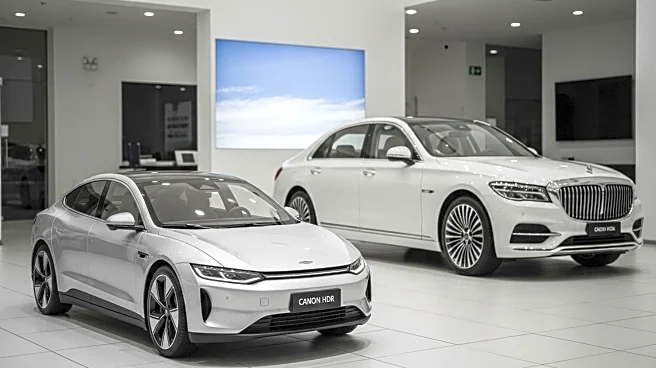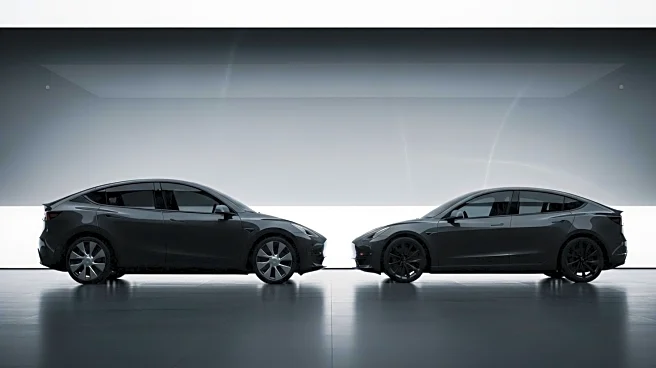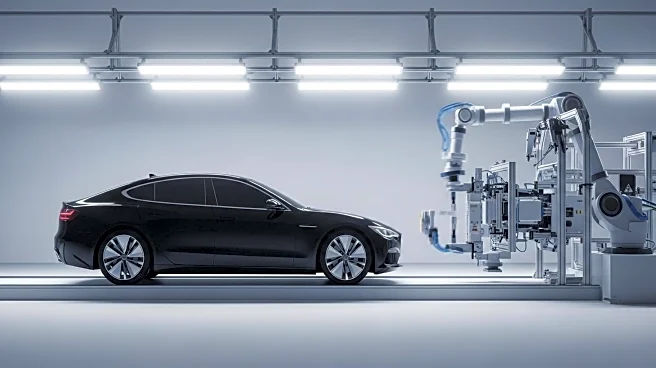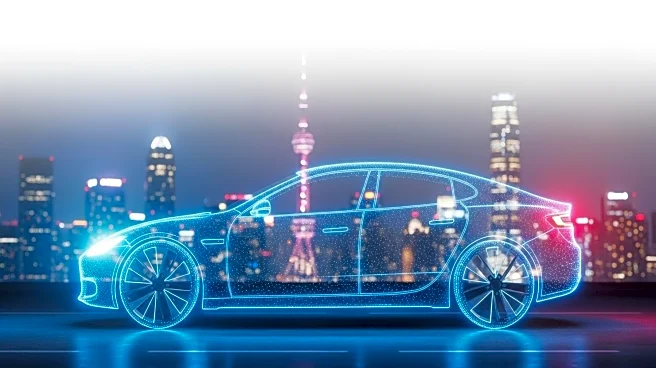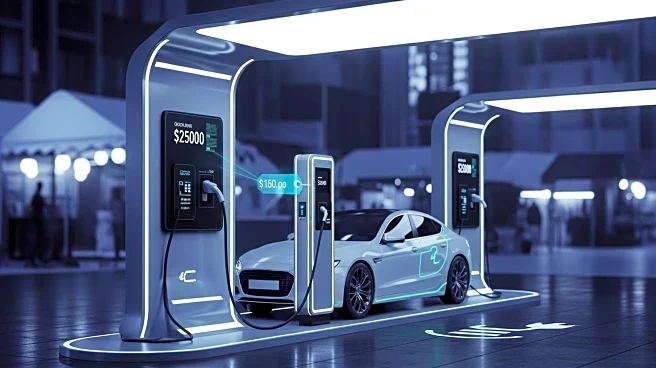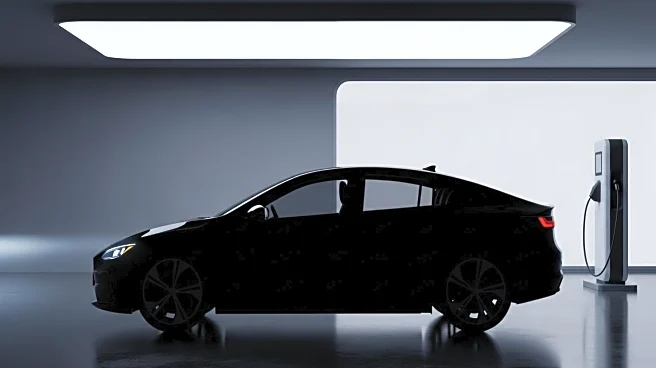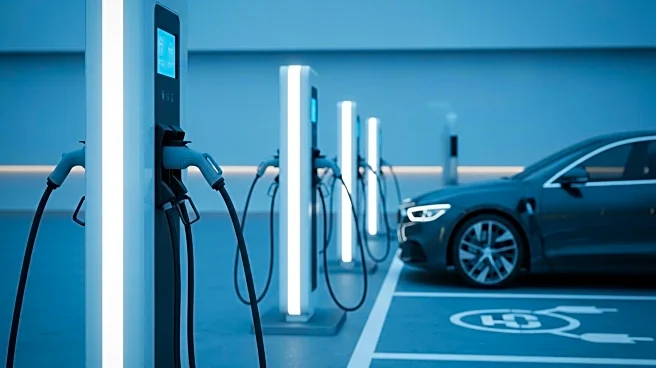What is the story about?
What's Happening?
The average price of new cars in the United States has exceeded $50,000 for the first time, according to Kelley Blue Book (KBB). This milestone was reached in September, driven by the increasing sales of electric vehicles (EVs) and luxury models. EVs accounted for 11.6% of all new vehicle sales during the month, with an average selling price of $58,124, marking a 3.5% increase from August. The third quarter saw a significant rise in EV sales, with 437,487 units sold, representing a 10.5% market share and a nearly 30% increase from the previous year. Despite the expiration of government-backed EV incentives at the end of September, many buyers rushed to secure their purchases.
Why It's Important?
The rise in new car prices reflects broader economic trends, including inflationary pressures and shifts in consumer preferences towards EVs and luxury vehicles. This development impacts price-sensitive buyers, who may be pushed towards the used car market due to the diminishing availability of lower-priced new vehicles. The automotive industry faces challenges from tariffs and cost pressures, but the growing demand for EVs suggests a potential shift in market dynamics. Tesla, a dominant player in the EV market, experienced a slight decrease in average transaction prices, indicating potential price adjustments in the future.
What's Next?
As the market adapts to these changes, industry analysts anticipate further disruptions, particularly with Tesla's introduction of new standard versions of the Model 3 and Model Y. These developments may lead to a decrease in average prices across the EV segment. Additionally, the expiration of federal solar tax credits could influence consumer decisions regarding sustainable energy solutions, potentially affecting the automotive industry's focus on EVs.
Beyond the Headlines
The shift towards higher-priced vehicles and EVs may have long-term implications for the automotive industry, including changes in manufacturing priorities and investment in sustainable technologies. The evolving landscape could also impact employment within the sector, as companies adjust to new consumer demands and regulatory environments.
AI Generated Content
Do you find this article useful?
